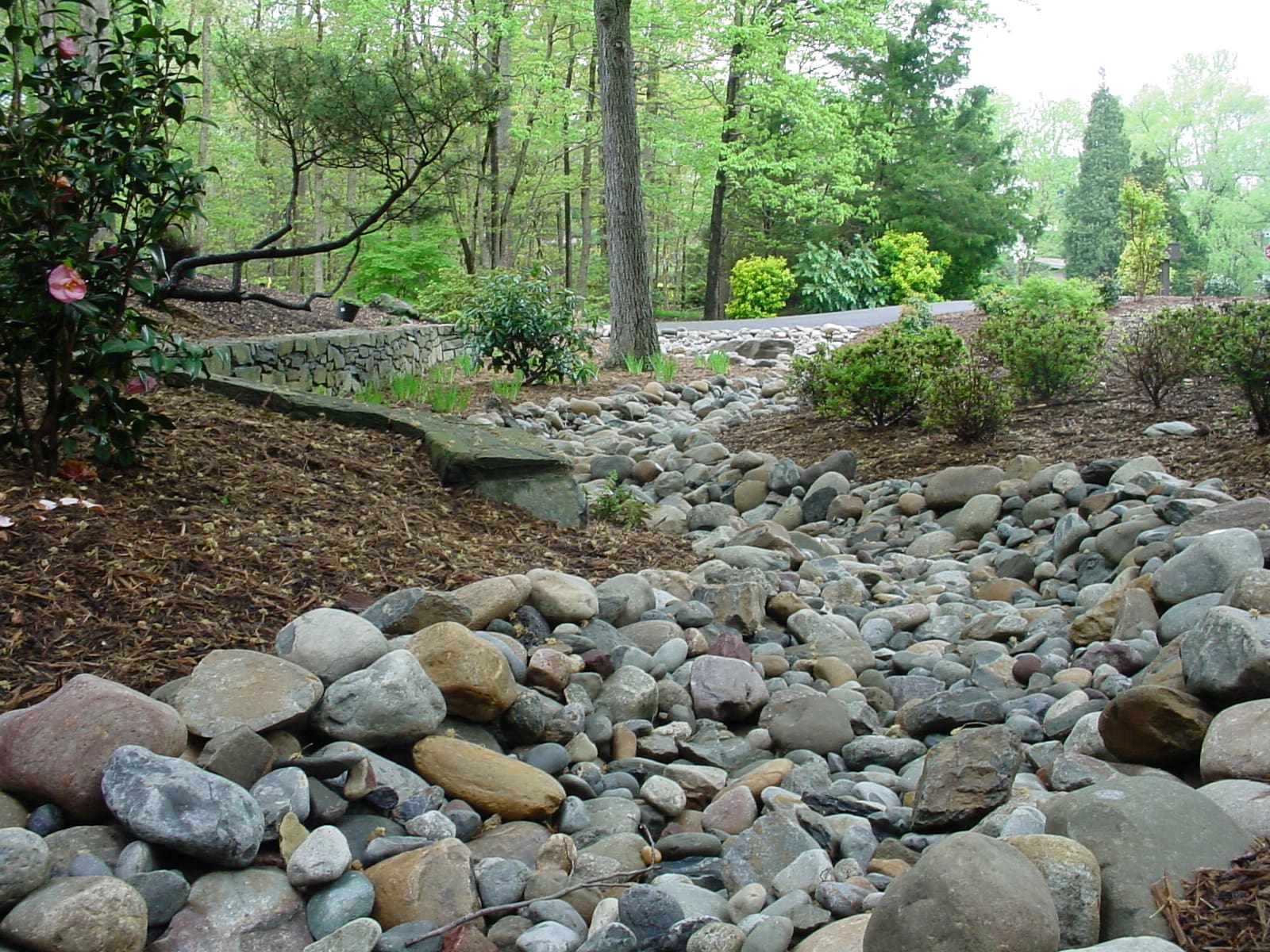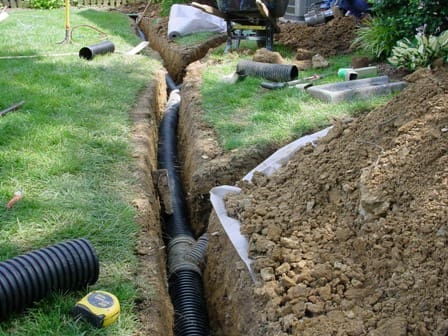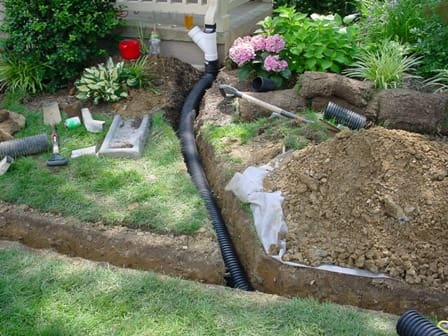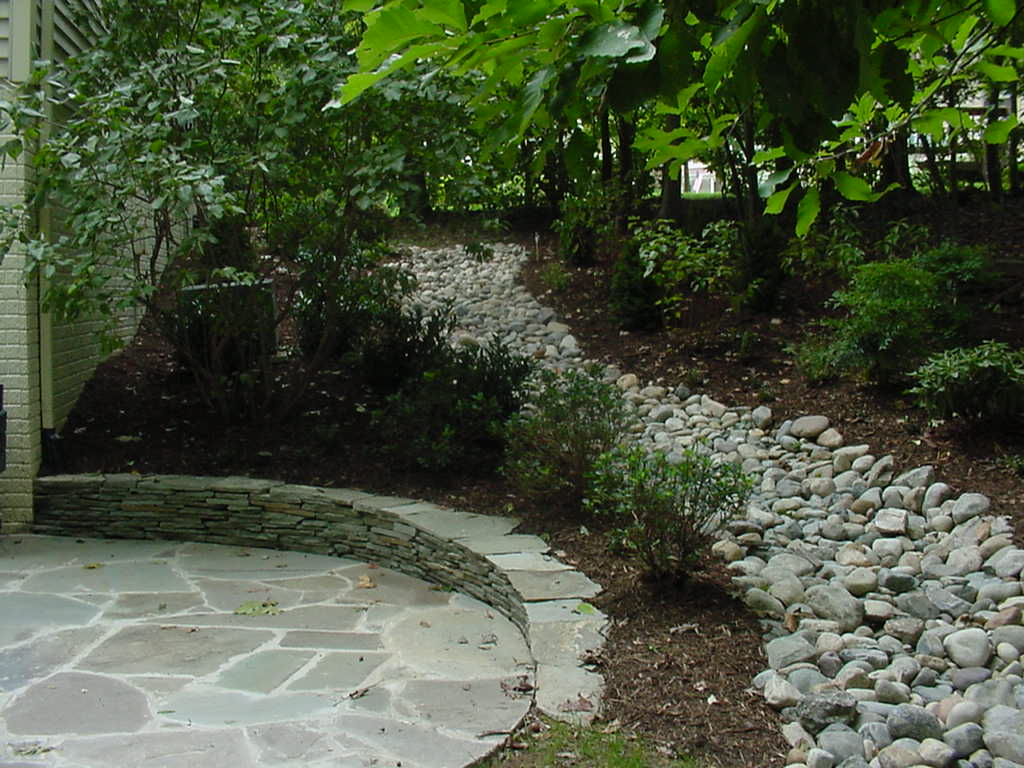
Poor drainage in a yard can result in the erosion of topsoil, water pooling around a house’s foundation, and even flooded basements. Overall, this issue can make a yard unusable and leave homeowners extremely frustrated.
Causes of Poor Drainage
If you have customers complaining about their muddy misfortunes in the backyard, there are a number of causes that can be driving the poor drainage issues.

“Every drainage problem is different,” says Stephen Shikle, a landscape architect for Michael Hatcher and Associates, based in Olive Branch, Mississippi. “The only common thing is water must flow downhill!”
The most common culprit of poor drainage goes back to the grading and elevation of the site. This can be due to poor planning or a developer opting not to take drainage into consideration. Sometimes the problem can originate from a neighbor making changes to their yard, altering the flow of water.
“(In those cases) there’s literally nothing you can do other than just capture it when it enters your property and try to redirect it, unfortunately,” says Krisjan Berzins, founder of Kingstowne Lawn & Landscape based in Alexandria, Virginia.

Downspouts that are dumping water right at the foundation of the house or clogged gutters are an often overlooked cause of drainage issues.
Another source of poor drainage can come from changes to the landscape with new plant beds, the addition of seating walls or other structures that block water from flowing. If fences are installed with the boards down to the ground this creates a dam at the property line. Some of the other causes include excessive rainfall, a high water table and poor soils.
Drainage Solutions
Every drainage solution is going to vary on a case-by-case basis as these are site-specific. However, typically it is a combination of solutions that can help deal with the drainage issue.
“Generally speaking, our only option is to figure out how to properly hold the water on-site (retention ponds or rain gardens) or discharge it (if allowable) onto municipal streets,” says Rene West, president at Executive Landscaping, Inc., based in Pensacola, Florida. “In Florida, commercial properties must retain up to 1 inch of rainfall before it can discharge onto another property (typically onto a street).”
Berzins advises going to the source of the water first, whether it be coming from the downspouts or a neighbor’s property.

“One thing I see a lot of in general is trying to address a drainage problem or a wet area at the point where the water is collected,” Berzins says. “I’m not saying you shouldn’t do that. But in many cases, that is a symptom of the problem.”
It’s better to capture the water at the source and implement other drainage solutions in the low spots as well.
“Water flows downhill,” Shikle says. “The only way to move it uphill is a pump. They need to look uphill and see if there is a way to re-direct water before it gets to the issue area.”
In many cases, Kingstowne will capture the water, redirect it in some subsurface piping to a low point in the yard whether it terminates into a rain garden or just short of the property line and it flows out from there. Retention areas like rain gardens hold the water so it can slowly percolate back into the ground.
However, budget plays a major role in what drainage solutions are an option. Berzins admits rain gardens can be more expensive.
“Drainage isn’t a sexy topic,” Berzins says. “It’s an important one, but I think when a homeowner is looking at $5,000-10,000 they’d rather put that into a patio or some beautiful new plantings. So that’s the struggle.”

Because water will take the path of least resistance, re-grading the property can create the proper slope to move the water away from the house.
“Surface drainage is always the best way when possible,” Shikle says. “Re-grading the yard is the easiest and less expensive option, if possible.”
When working with smaller properties, solving drainage problems can be more challenging as there is less space to direct the water, but Berzins says they’ve found subsurface solutions to be effective.
“Education is the key to solving drainage issues,” West says. “Either educate yourself or consult with a civil engineer. Even with 37 years of experience, I sometimes consult with civil engineers to obtain their opinion.”
Berzins adds that drainage is an evolving issue. A solution for the problem today may not be the solution for the drainage problem five or 10 years down the road as there are a number of variables out of your control that can change.
“There are so many variables when it comes to drainage, we try and temper people’s expectations a little bit and say, ‘Look, we’re confident this is going to solve the problem, but there will be some extreme situations where it just won’t be able to keep up,’” Berzins says.

